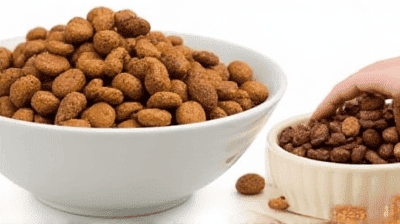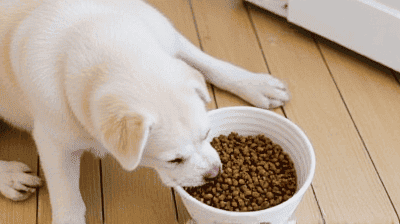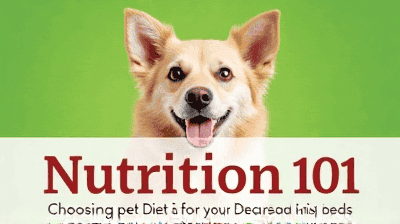Nutrition 101: Choosing the Best Diet for Your Pet's Needs

As pet owners, one of our most essential responsibilities is to ensure that our furry companions receive an optimal diet that meets their unique nutritional needs. Just like humans, pets require a balanced diet to thrive, maintain a healthy weight, and prevent common health issues.
The Importance of Nutrition in Pets
Why Nutrition Matters
Pet nutrition is crucial for several reasons:
Health and Wellness: A balanced diet provides the essential nutrients required for maintaining overall health, supporting organ function, and preventing diseases.
Energy Levels: Proper nutrition ensures that pets have sufficient energy for daily activities, play, and exercise.
Weight Management: A nutritionally balanced diet helps pets maintain a healthy weight, reducing the risk of obesity and associated health problems.
Coat and Skin Health: Suitable nutrients contribute to healthy skin and a shiny coat, enhancing your pet’s appearance and comfort.
Longevity: Good nutrition can contribute to a longer, healthier life for your pets, allowing them to enjoy their time with you.
Nutritional Needs of Pets
The nutritional needs of pets vary based on several factors, including:
Species: Dogs, cats, birds, and reptiles have different dietary requirements.
Age: Puppies and kittens require specific nutrients for growth, while senior pets may need diets tailored to their changing needs.
Activity Level: Active pets need more energy than those that are less active.
Health Conditions: Pets with specific health issues may require specialized diets.
Types of Pet Diets

When it comes to choosing a diet for your pet, there are several options available. Understanding each type is essential for making an informed decision:
1. Commercial Pet Food
Commercial pet food is widely available and comes in various forms, including dry, wet, and semi-moist.
Dry Food (Kibble): This is convenient, affordable, and has a long shelf life. It is formulated to provide complete nutrition and helps reduce dental plaque.
Wet Food (Canned): Wet food is often more palatable for pets and provides additional moisture to their diet. However, it can be more expensive and must be used promptly after opening.
Semi-Moist Food: These foods are less common and can be convenient for some pet owners. They contain more moisture than dry food but typically have preservatives.
2. Raw Diets
Raw diets (often referred to as "BARF" or biologically appropriate raw food) consist primarily of uncooked meat, bones, fruits, and vegetables. Proponents argue that raw diets mimic a pet's natural ancestral diet. However, raw diets must be balanced carefully to ensure they meet all nutritional requirements.
3. Home-Cooked Meals
Preparing home-cooked meals for pets can be rewarding and allows for better control over ingredients. However, it can be challenging to formulate balanced meals without veterinary guidance. It’s essential to work with a veterinarian or pet nutritionist to create recipes that meet your pet’s nutritional needs.
4. Prescription Diets
Veterinary-prescribed diets are designed for pets with specific health conditions, such as kidney disease, allergies, or obesity. These diets must be followed strictly and should come with guidance from a veterinarian.
5. Grain-Free Diets
Grain-free diets have gained popularity, especially among dogs. While some pets may benefit from grain-free options due to allergies, emerging research suggests that grain-free diets may not be suitable for all pets. Always consult with a veterinarian before making dietary changes.
Evaluating Pet Food Labels
Understanding how to read pet food labels is vital for selecting the right diet for your pet. Let’s break down the key components of pet food labels:
1. AAFCO Statement
The Association of American Feed Control Officials (AAFCO) provides guidelines for pet food formulation. Look for a statement indicating that the food meets AAFCO dietary standards, which assures that it is nutritionally complete.
2. Guaranteed Analysis
The guaranteed analysis lists the minimum or maximum percentage of key nutrients in the food, including protein, fat, fiber, and moisture. This information can help you compare products and choose one that meets your pet’s needs.
3. Ingredients List
Ingredients are listed by weight, from highest to lowest. Look for high-quality protein sources as the first ingredient and be cautious of foods that contain fillers, artificial additives, or low-quality ingredients.
4. Nutritional Adequacy Statement
This statement indicates whether the food is appropriate for a specific life stage (puppy, adult, senior) and whether it meets the needs of healthy pets or those with special dietary considerations.
5. Feeding Guidelines
Pet food packaging typically includes feeding guidelines based on weight and activity level. Use these as a starting point and adjust as needed based on your pet’s individual needs.
Special Dietary Needs by Life Stage

Pets have unique nutritional requirements that change as they age. Understanding these needs is crucial for their health.
1. Puppies and Kittens
Growing pets require higher levels of protein, fat, and essential nutrients to support their rapid growth and development. Look for high-quality puppy or kitten formulas, and consult with your veterinarian on feeding schedules and amounts.
2. Adult Pets
Adult pets require a balanced diet to maintain their health and energy levels. Focus on providing a diet that meets their specific needs based on their activity level, breed, and any health concerns.
3. Senior Pets
As pets age, their metabolism changes, and they may require fewer calories. Senior diets often include joint support supplements and easily digestible ingredients to accommodate their changing digestive health. Consult your veterinarian for recommendations on transitioning to a senior diet.
Understanding Special Dietary Needs
Certain pets may have specific dietary needs due to health issues or sensitivities. Here are some common concerns and dietary approaches:
1. Food Allergies and Sensitivities
Pets can develop allergies to certain ingredients, leading to skin irritations, gastrointestinal issues, or other health problems. If you suspect your pet has a food allergy, consult your veterinarian for testing and recommendations for hypoallergenic diets.
2. Obesity and Weight Management
Obesity is a prevalent issue among pets and can lead to serious health problems. Consult with your veterinarian to create a weight management plan that includes appropriate portion sizes, activity levels, and possibly prescription weight-loss diets.
3. Digestive Issues
Pets with sensitive stomachs or digestive disorders may benefit from easily digestible diets that are low in fat and fiber. Probiotics and prebiotics can also aid digestion.
4. Dental Health
Certain diets and treats are formulated to promote dental health by reducing plaque and tartar buildup. These products can be an excellent addition to a pet's overall dental care routine.
Transitioning to a New Diet

When introducing a new diet, it's essential to transition gradually to minimize digestive upset and allow your pet to adjust. Here’s how to do it effectively:
1. Gradual Introduction
Start by mixing a small amount of the new food with your pet’s current food. Gradually increase the proportion of the new food over 7 to 10 days.
2. Monitoring
Keep an eye on your pet’s response during the transition. Look for any signs of digestive upset, such as diarrhea or vomiting. If issues arise, slow down the transition or consult your veterinarian.
3. Consistency
Once the transition is complete, try to stick to a consistent feeding routine. Regular meal times can help your pet adapt to the new diet.
The Role of Supplements in Pet Nutrition
Sometimes, a pet’s diet may not provide all the necessary nutrients, especially if they have specific health needs. Here are some guidelines on using supplements:
1. Omega Fatty Acids
Omega-3 and Omega-6 fatty acids can support skin and coat health and have anti-inflammatory properties. These can be especially beneficial for pets with allergies or joint issues.
2. Probiotics
Probiotics help support gut health and can be beneficial for pets with digestive issues or those recovering from illness.
3. Joint Supplements
Glucosamine and chondroitin supplements can help support joint health, particularly in older pets or those prone to arthritis.
Conclusion
Choosing the best diet for your pet's needs is a rewarding journey that plays a vital role in their overall health and well-being. By understanding the importance of nutrition, evaluating different dietary options, and considering your pet's unique needs, you can make informed decisions that will enhance their quality of life. Remember to consult with your veterinarian for personalized guidance, especially when navigating special dietary requirements or making significant changes to your pet's diet.
With the right nutrition, you can help your pet live a long, healthy, and happy life, filled with joyful moments and shared adventures. Start today by assessing your pet’s current diet, educating yourself on the fundamentals of pet nutrition, and taking the necessary steps to meet their dietary needs.








